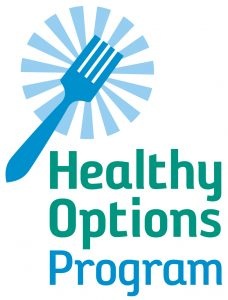Breadcrumb
Healthy Options Toolkit
The goal of our core research is to work with our community partnerships, in order to address rural health issues using community-based participatory research principals.
Rural Restaurant Study
The much publicized obesity epidemic has led researchers and public health professionals in search of affordable and effective community programs that will contribute to a more supportive environment for healthy eating and physical activity. This project focused on rural, locally-owned restaurants as a possible point of intervention. A review of existing restaurant-based programs intended to encourage healthy eating revealed that these programs are often too expensive and impractical for the typical owner-operated restaurant in the rural Midwest.
In the pilot project of this study, a low-cost, low-risk intervention was designed to influence ordering behavior. Point-of-purchase interventions such as this are consistent with behavior change theories such as Social Cognitive Theory, in that an “environmental cue” encourages people to make a positive choice. A table sign (plastic holder with removable paper inserts) was placed on each table listing the healthy options the restaurant already offered; for example, have meat baked or broiled instead of fried, toppings on the side, or smaller portions for some items. It was implemented and evaluated over time in four rural restaurants. This pilot tested the feasibility of program implementation and data collection methods, examined issues of program sustainability, and provided preliminary data on what customers want and what restaurant owners may be willing to change. Results were used to inform the design of a much larger statewide dissemination study involving rural restaurants. A Healthy Options toolkit was developed from this project for restaurants to use who are interested in making their own changes. Read more here about the toolkit.
The specific aims of the statewide dissemination phase of this study were:
1. To determine the adoption rate of the restaurant intervention using an identified denominator (n=100) of restaurants in rural Iowa. The adoption rate is calculated as the number of restaurant owners that agree to initiate the intervention divided by the denominator. This aim also includes examining the representativeness of these owners and their restaurants, comparing them to non-adopters.
2. To determine implementation characteristics of the restaurant intervention. This included fidelity to the intervention among adopters, and time and cost elements.
3. To determine the maintenance level of the restaurant intervention over a period of 1.5 years. This included the extent to which the intervention has becomes institutionalized, or part of routine practices.
Toolkit Links:

Brief History and Results of the Rural Restaurant Healthy Options Program
Tips for program implementation
Brochure To Give Restaurant Owners
Publications:
Nothwehr, F., Schultz, U., Chrisman, M. and Haines, H. (2014, June). State-wide dissemination of a rural non-chain restaurant intervention: adoption, implementation, and maintenance. Health Education Research, 29(3), 433-441.
Nothwehr, F., Andsager, J., & Haines, H. (2014, March). The Rural Restaurant Healthy Options Program: response of rural, local newspapers to a program press release. Health Promotion Practice, 15(2), 217-222.
Nothwehr, F., Snetselaar, L., Dawson, J., & Schultz, U. (2013, January). Promoting healthy choices in non-chain restaurants: effects of a simple cue to customers. Health Promotion Practice, 14(1),132-138.
Nothwehr, F., Snetselaar, L., Hradek, C., & Sepulveda, M. (2010, November). Healthy option preferences of rural restaurant customers. Health Promotion Practice, 11(6), 828-836.